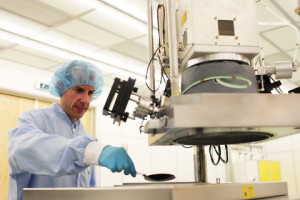Types of graphene
Types of graphene – Technological breakthrough guarantees production of high quality graphene.
Due to the discovery of more graphene applications, the University of Pennsylvania has established a small research company named “Graphene Frontiers” to provide technological solutions for production of quality graphene. This body was awarded 0.744 million dollars in September to improve production of graphene in a unique process known as the roll-to-roll process. This process is expected to make the production of high quality graphene more efficient than the rather. Graphene Frontiers is making attempts to lead other producers into creating polycrystalline mono-layers of graphene through a roll-on-roll process, as opposed to the current chemical vapor decomposition (CDV) process.
There are two major types of graphene: monocrystalline and polycrystalline. These two types have different applications. Polycrystalline graphene is crucial to manufacture some types of transistors and advanced composites, while monocrystalline graphene is used in more advanced applications. Despite the high demand for monocrystalline graphene, its methods of extraction do not allow large scale production. Up to date, monocrystalline graphene is produced through mechanical cleavage a technique in which graphene is extracted from graphite in single layer flakes.
This limitation has attracted a lot of investments in research into best ways to extract monocrystalline graphene. One of the companies that has invested heavily in this is Graphene Frontiers. So far they have made a breakthrough and are working on ways of making it even better. There are numerous techniques suitable for producing excellent quality graphene, and since each of them has its own shortcomings and advantages, it is not possible to say which technique is best.
One of the most commonly used techniques entails extracting carbon layers from graphite using chemical, plasma and mechanical exfoliation techniques. Unfortunately, this process leads in the production of low quality graphene.
Advanced producers use CVD techniques which do not start with mined graphite. These result in the production of synthetic graphene. This type is of excellent quality, but the major problem is until now, convenient ways of producing it have not been realized.


Leave a Reply